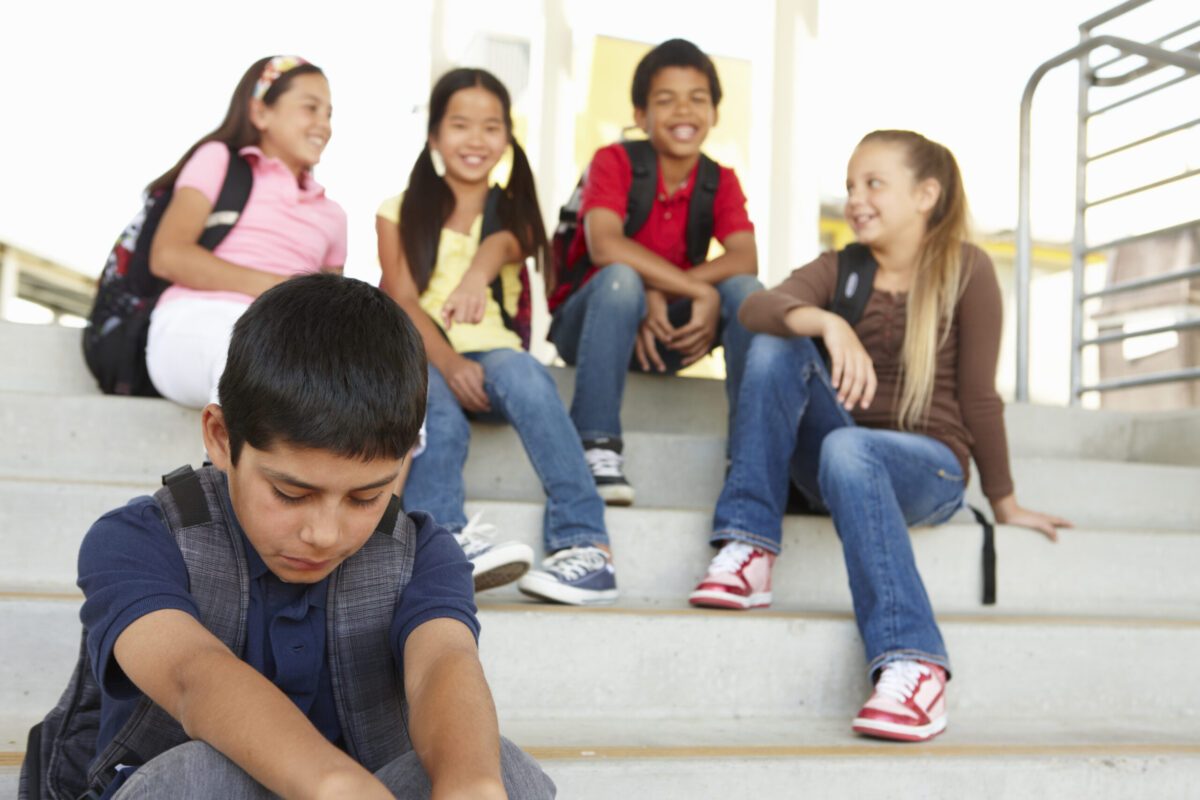People tend to lean on a clear stereotype when it comes to homelessness: someone sitting on the street with tattered clothes, greasy hair, and dirt caked into fingernails or on the face. With this image, you would think you can pick out a homeless person in a group. However, the reality looks much different.
Homelessness doesn’t necessarily mean living on the street. It can involve “couch surfing,” or staying with friends or family members. It can mean staying in shelters or cheap hotel rooms.
Homelessness also doesn’t just apply to adults. Many kids don’t have permanent living arrangements – even if they stay with their families. These kids and teens go out of their way to hide their situations, making it even harder for teachers and counselors to help them.
This guide can help adults – whether you are a teacher, community member, or parent of a child – better understand what homeless youth look like and why they try so hard to hide. With this in mind, you can take steps to help the homeless youth in your area get the help they need.
What Does Homelessness Look Like in Florida?
There are many faces of homeless youth in Florida – and particularly in Pinellas county. Homeless teens can be found in even the most affluent areas, where they try to pass off as normal students with average income levels.
It’s time to stop thinking about homelessness exclusively as teens and kids sleeping on the street or in shelters. Homeless youth lack a permanent housing situation, whether this means staying in an extended-stay hotel or moving from one friend’s house to another throughout the school year.
“The situations we hear about are really unsafe — a small child sleeping on a couch, a child sleeping on the floor, Mom’s staying with a bad boyfriend,” Cara Baldari, who works for the D.C. based non-profit First Focus on Children, tells the Washington Post.
In 2017, The Florida Project swept through theatres and highlighted what homelessness looks like in Central Florida. Families stay in motels for months, trying to scrape together rent payments and food for their kids. These conditions were also highlighted by the Washington Post this year, which showed how some families live without air conditioning or electricity in bug-infested rooms. Yes, these kids and teens are with their families and return to the same place each night, but you can hardly call these abandoned motel communities “homes”.
Kids living in motels, with relatives, or with friends is more common than you might think. The Education Department said there are more than 1.3 million homeless children in public schools for the 2016-2017 school year, which was a 10% increase over the past two years. These numbers are also likely to skyrocket this year as the COVID-19 pandemic drives up the number of runaways.
Homeless Teens Don’t Want to Be Found or Identified
You often hear stories of teachers who visit homeless shelters and are shocked to see their students there. They had no idea these students were homeless because the kids and teens try to hide it in class. The fact is: most kids don’t want people to know about their situation.
For these kids, admitting that you are homeless is embarrassing. Kids don’t want to be made fun of by their peers or made to feel less-than for not being able to afford a field trip, homecoming dress, or cool new gadget. Even worse, students don’t want to be constantly pitied by teachers, peers, and the parents of their friends. This is what drives them to hide their homeless situation.
“They make an effort to fit in,” Shelley Lauten, CEO of the Central Florida Commission on Homelessness, says. “They go to places where they can fit in. They’re just part of the crowd.”
Even outside of school, non-profit organizers have a hard time understanding the sheer number of homeless teens on the streets. In 2019, volunteers found six teens living in the Orlando Airport, trying to blend in at a place where suitcases and curling up to sleep (typically because of a delayed flight) often goes unnoticed.
Instead, organizations like Family Resources track the number of homeless teens by the number of calls for help they receive each year. Covenant House in Orlando had more than 665 homeless youth call last year for help. They have a waiting list in the hundreds. At Family Resources, we do our best to welcome teens who need our help, but our SafePlace2B shelters also fill up quickly.
Know the Signs of Potential Homelessness
In the same way that homelessness comes in different forms, homeless teens might look different or act differently – making it hard to create a list of warning signs for teachers to paint with a broad brush. However, there are a few common traits to look out for if you work with students or engage with the youth of your community. These include:
- The child or teen has poor hygiene or unmet needs – like bad teeth, poor vision while needing glasses, or long, unkempt hair.
- He or she wears the same outfit or similar batch of outfits frequently. They may show up in dirty clothes as well.
- They experience fatigue or difficulty paying attention.
- A student has been enrolled in multiple schools or there are gaps in their education.
- The student has poor or inconsistent attendance without excuses for why they were absent.
- They won’t participate in clubs or activities. They can’t go on field trips or enjoy other celebrations alongside their peers.
- They lack basic school supplies and can’t complete at-home projects.
- They experience social challenges. For example, they may be shy, aggressive, clingy, and quick to get angry.
- Their behavior worsens late in the day when they need to head home.
While one of these traits might be an isolated problem with a child or teen, a pattern of behavior and multiple traits could indicate bigger issues at home – ones that the student thinks they are hiding.
School Counselors and Teachers Do What They Can
School counselors, administrators, and teachers do what they can to help students who are in dangerous living situations. However, they can’t intervene if they aren’t aware of the situation because the student hides their homelessness so well.
“I have found through my research is that school counselors often feel helpless despite their desire to help students who are experiencing homelessness,” Stacey Havlik, assistant professor of education and counseling at Villanova University writes. “With increased preparation and knowledge on homelessness, school counselors would be in a much better position to help homeless students succeed.”
Fortunately, some homeless youth experts are stepping in to help teachers who want to protect and lift up their homeless students. The Wisconsin Department of Public Instruction created a useful PDF to guide educators, with tips including:
- Stabilize the basic needs of students by making sure they have basic hygiene products, food, and clothes. (Some schools create food banks and clothes rooms specifically for this.)
- Avoid assignments that require supplies, field trips (like visiting a museum), or using food in crafts. A macaroni project could make a child choose between eating and getting a good grade.
- Check in with students in-private to understand their situation. Give them space to talk about how they are doing and how their family is doing.
- Be proactive about getting help. Instead of suggesting a student get a tutor or counseling, help them set up appointments that still allows them to get home on time.
Most importantly, be welcoming to your students and give them a stable environment. You need school to be a safe place where students can eat, learn, and grow with their friends. Your class can be a haven for them to let their guard down, if only for a few hours each day.
What Can You Do to Help Homeless Teens?
If you know of a child or teen in your area who is homeless – whether they have run away from home or are living in temporary housing with their family – reach out to your local school counselor or community leader to find ways to help. You can also contact our team at Family Resources to learn about different organizations in Pinellas and Manatee counties that help homeless families.
If you want to help homeless youth in your community as a whole, consider making a donation to our cause. We provide youth shelters, family counseling, after school activities, and other services to help kids and teens in the area. Your support can help us provide hygiene kits, hot showers, and trusted support systems to some of our most vulnerable neighbors and friends.


